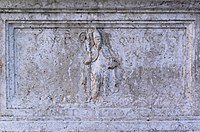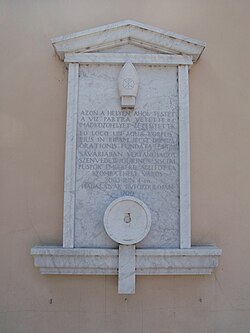
Pope Alexander I was the bishop of Rome from c. 107 to his death c. 115. The Holy See's Annuario Pontificio (2012) identifies him as a Roman who reigned from 108 or 109 to 116 or 119. Some believe he suffered martyrdom under the Roman emperor Trajan or Hadrian.
Saint Gavinus is a Christian saint who is greatly celebrated in Sardinia, Italy, as one of the Martyrs of Torres, along with his companions SS Protus, a bishop, and Januarius, a deacon.
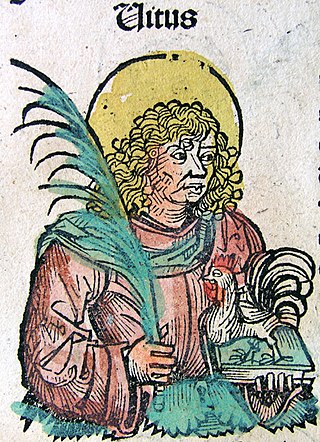
Vitus, whose name is sometimes rendered Guy or Guido, was a Christian martyr from Sicily. His surviving hagiography is pure legend. The dates of his actual life are unknown. He has for long been tied to the Sicilian martyrs Modestus and Crescentia but in the earliest sources it is clear that these were originally different traditions that later became combined. The figures of Modestus and Crescentia are probably fictitious.
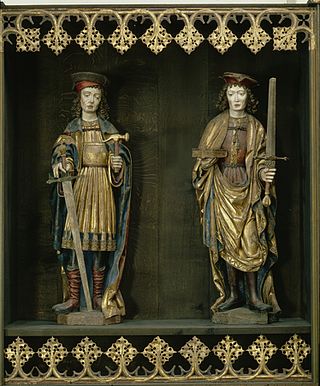
Saints Crispin and Crispinian are the Christian patron saints of cobblers, curriers, tanners, and leather workers. They were beheaded during the reign of Diocletian; the date of their execution is given as 25 October 285 or 286.

Pancras was a Roman citizen who converted to Christianity and was beheaded for his faith at the age of fourteen, around the year 304. His name is Greek (Πανκράτιος) and means "the one that holds everything".
Cyriacus, sometimes Anglicized as Cyriac, according to Christian tradition, is a Christian martyr who was killed in the Diocletianic Persecution. He is one of twenty-seven saints, most of them martyrs, who bear this name, of whom only seven are honoured by a specific mention of their names in the Roman Martyrology.

Saint Anastasia is a Christian saint and martyr who died at Sirmium in the Roman province of Pannonia Secunda. In the Eastern Orthodox Church, she is venerated as St. Anastasia the Pharmakolytria, i.e. "Deliverer from Potions". This epithet is also translated as "One who Cures (Wounds)" in Lampe's A Patristic Greek Lexicon.

Nabor and Felix were Christian martyrs thought to have been killed during the Great Persecution under the Roman emperor Diocletian. A tomb in Milan is believed to contain their relics.

Felix and Adauctus (d. 303) were according to tradition, Christian martyrs who were said to have suffered during the Great Persecution during the reign of the Roman emperor Diocletian.
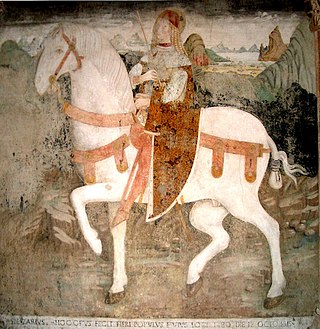
Nazarius and Celsus (Italian: San Nazaro e San Celso; German: Nazarius were two martyrs of whom little is known beyond the discovery of their bodies by Ambrose of Milan.
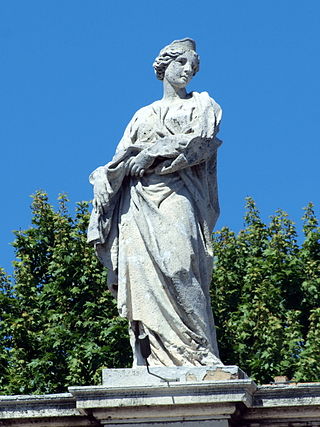
Balbina of Rome, sometimes called Saint Balbina and Balbina the Virgin is venerated as a virgin martyr and saint of the Catholic Church.
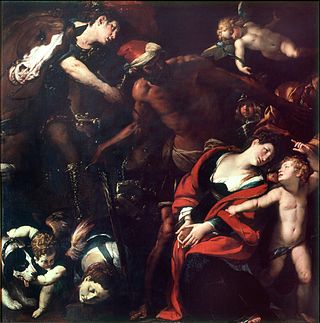
Rufina and Secunda were Roman virgin-martyrs and Christian saints. Their feast day is celebrated on 10 July.

Venantius of Camerino is the patron saint of Camerino, Italy and Raiano, Italy. Christian tradition holds that he was a 15-year-old who was tortured, and martyred by decapitation at Camerino during the persecutions of Decius. Martyred with him were 10 other Christians, including the priest Porphyrius, Venantius' tutor; and Leontius, bishop of Camerino.
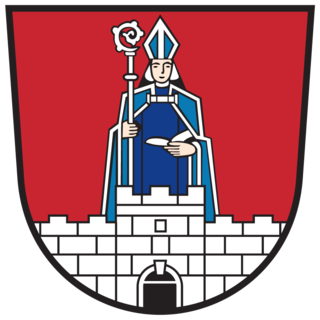
Paternian or Paternianus is the name of an Italian saint. A native of Fermo who escaped to the mountains during the persecutions of Christians by Diocletian, he was then appointed bishop of Fano by Pope Sylvester I.

Maternus was Archbishop of Milan from c. 316 to c. 328. He is honoured as a Saint in the Catholic Church and his feast day is on July 18.

Calimerius was an early bishop of Milan. He is honoured as a Saint in the Catholic and Eastern Orthodox churches and his feast day is on July 31.
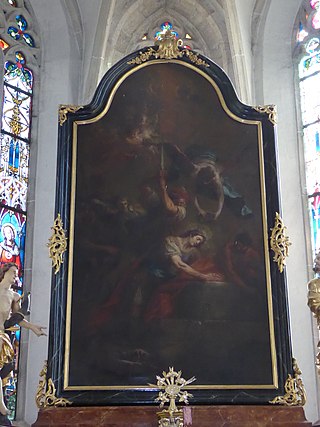
Quirinus of Tegernsee, or Quirinus of Rome, is venerated as a martyr and saint of the third century.
Saint Quirinus of Tivoli is venerated as a martyr and saint of the Catholic Church. His cult is centered at Tivoli. Quirinus of Tivoli may be the same saint as Quirinus of Sescia, whose relics were carried from Pannonia to Rome, and perhaps Tivoli as well, explaining the existence of a cult to Saint Quirinus of Tivoli. According to this interpretation Quirinus of Sescia relics were reportedly moved to Apennine Peninsula during the invasion of the Huns.

Quirinus of Neuss, sometimes called Quirinus of Rome is venerated as a martyr and saint of the Catholic and Eastern Orthodox churches. His cult was centered at Neuss in Germany, though he was a Roman martyr.

The Catacombs of San Sebastiano are a hypogeum cemetery in Rome, Italy, rising along Via Appia Antica, in the Ardeatino Quarter. It is one of the very few Christian burial places that has always been accessible. The first of the former four floors is now almost completely destroyed.

